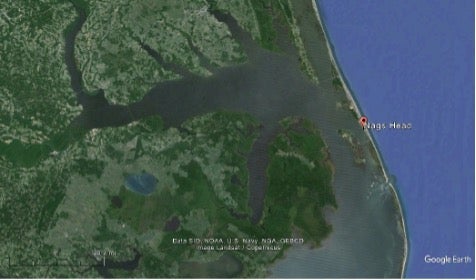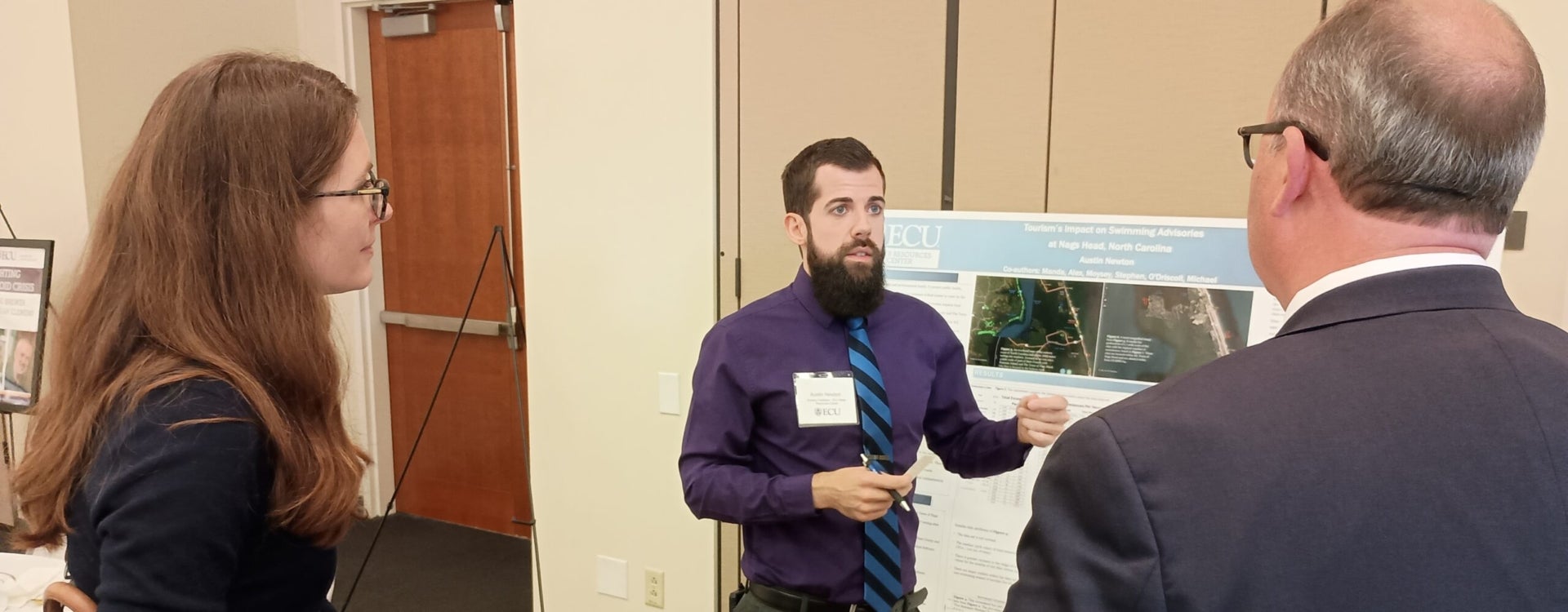Water quality assessment during tourist swimming and non-swimming seasons in coastal areas
Timeframe: 1997-2023
To protect public health, the N.C. Department of Environmental Quality has been conducting regular water testing since 1997 to determine the amount of fecal matter in coastal environments.
Using the data from these tests, researchers from the ECU Water Resources Center conducted a study to establish whether the tourist swimming season (April-Sep.) has higher rates of fecal contamination in coastal waters than the non-swimming season (Oct.-March) when tourism is low. The study areas for this research were Dare County, and the town of Nags Head.

Location of Nags Head in eastern North Carolina.
Data were collected from 77 testing sites in the town of Nags Head and other areas in Dare County over the period 1997-2023.
What was researched?
This study used a specific type of bacteria, called enterococci, to assess water quality. If measurements exceeded 104 colony-forming units (CFUs) of enterococci bacteria per 100 milliliters of water, it was a sign that, per EPA guidelines, the water is unsafe to interact with or play in. This means, when there were more than 104 CFUs of enterococci bacteria, the water quality was considered impaired (compromised), which then led to warnings about swimming in that water.
The Results
In general, in only 2.5% of all tests (i.e., 773 of 30,920 tests) was the water impaired. Results show that there were more cases of impaired water during the tourist swimming season (658 of 23683 tests) than during the non-swimming season (115 of 6964 tests).

Results from study showing number of tests per year, and number of tests that exceeded the threshold for enterococci bacteria.
What do these results mean?
These results suggest that overall, water quality is pretty good—only a small percentage of tests (i.e., 2.5%) indicated that the water was unsafe. However, it turns out the risk of impaired water can increase during the tourist swimming season. There were 2.8% instances of unsafe water during that busy time, compared to only 1.7% during the rest of the year. This suggests that when more people are around, the risk of water quality impairment is greater, so we should be more careful during the peak tourist season.
Researchers
Austin Newton, Dr. Alex Manda, Dr. Stephen Moysey, Dr. Michael O’Driscoll
